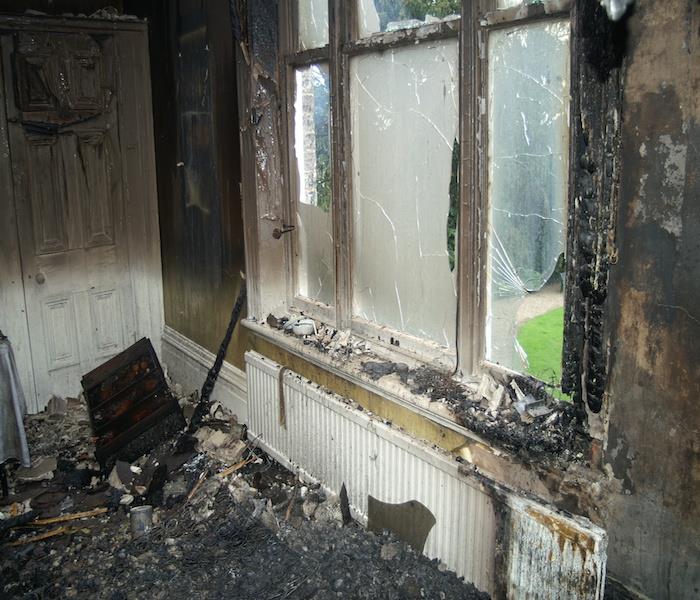Cleaning Up After a Fire
8/2/2016 (Permalink)
According to the National Fire Protection Association (NFPA), there are an estimated 370,000 house fires each year in the United States. These fires costs a total of $7 billion in total property damage. But what kind of fires are causing this damage and how are these fires cleaned up?
Types of Fires
There are three main types of fires that typically occur in homes across America; high-oxygen fires, low-oxygen fires, and kitchen fires. Each of these fires have their own aspects that allow them to create different types of damage. There are also different ways to properly clean them up.
A major factor that impacts the damage a fire causes is oxygen. Oxygen is part of the fire triangle of heat, fuel, and oxygen.
High-oxygen Fire
High-oxygen fires produce dry soot which makes these easier to clean than the other main types of house fires. They can typically be cleaned using a low-alkali detergent with dry sponges.
Low-oxygen Fire
A low-oxygen fire is a little more difficult to clean than a high-oxygen fire as it produces greasy, wet soot. This wet, smoky residue causes the fire to smolder. These fires are usually cleaned using a high-alkali detergent with warm water which can be used to wash walls and structures.
Kitchen Fire
Usually the most challenging type of fire damage to clean are kitchen fires. The biggest challenge of these fires come from the fact that the soot residue is difficult to detect. After kitchen fires, cabinets, drawers, and other appliances many times must be removed.
Cleaning Fires
Most of the damage that comes from fires doesn’t come from the actual flames but from the smoke and soot that the fire produces. This smoke and soot has the ability to penetrate the paint, carpet, upholstery, and clothes throughout the house. While some material in the affected home will need to be removed and disposed of, other materials are able to be cleaned. When the cleaning process takes place, there are some key aspects regardless of where the fire occurs.
Personal Protective Equipment (PPE)
Safety is the most important aspect when cleaning up a fire. Anyone cleaning up a fire should wear gloves, a protective mask, long-sleeved shirts, and pants. This equipment will help to minimize contact with the mold that could be dangerous. Again, professionals are trained to deal with mold so that it doesn’t harm them or anyone else in the house which is a major reason why only professionals should deal with mold.
Remove Contents from the Home
Regardless of what the material is that has been damaged, all contents inside the home should be removed. However, depending on what the specific material is that is being dealt with, it may not need to be discarded. While some materials do need to be discarded following a fire, others are able to be cleaned.
Ventilation
Ventilation is a key part of, not just putting out a fire, but also restoring a home after a fire. Smoke and soot create an uninhabitable environment in the building which is in need of fresh air. When the firefighters arrive on the scene, they will begin the ventilation process immediately to make the building safer. After they leave, ventilating will help by removing odors.
Additional Contaminants
While smoke and soot are responsible for the majority of the damage, lead and asbestos also can create an environment that is in need of restoration. If they become disturbed, what began as a simple fire restoration could become a serious environmental restoration.
Duct Cleaning
The smoke and soot that are a result of a fire can get trapped in the duct system of the building. Because of this, a thorough duct cleaning is required after any fire restoration. If a duct cleaning is not completed, there’s the possibility that contaminants and odors can spread to other areas of the home.
A fire in the home can be a devastating event. Depending on what type of fire occurs, the damage can force a small clean up or a total clean up. Either way, there are certain aspects of the restoration that will need to be completed. If you suffer a fire in your home, call on the professionals at SERVPRO to ensure a complete restoration.






 24/7 Emergency Service
24/7 Emergency Service
